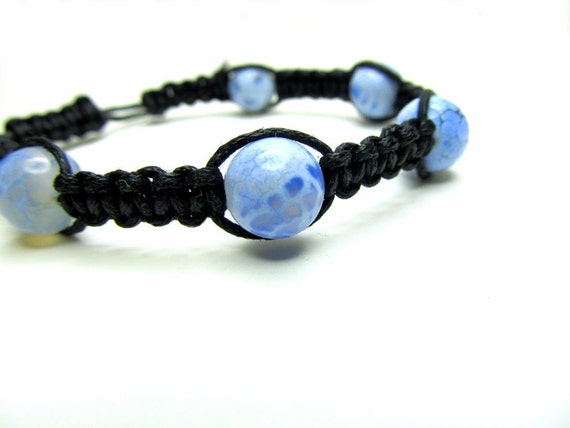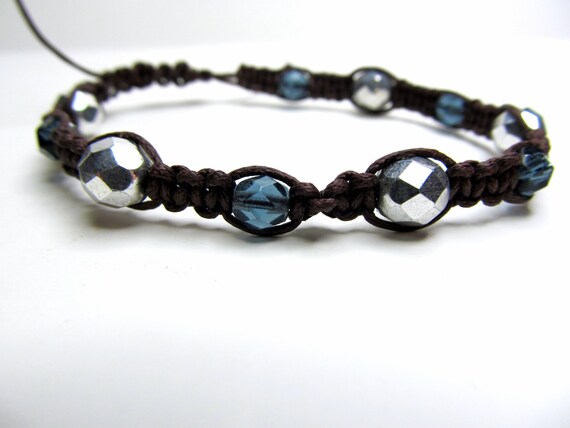I just recently raised my prices. Kind of a lot actually. It was scary, and I really want to change things back, but I've committed myself to this experiment, and I'm going to see it through.
What am I talking about? Well, not too long ago, I started to put some serious effort in pulling together wholesale info for my jewelry business. Knowing that, typically, wholesale prices are about half of retail, I decided to go through my shop and see if, at my current price point, I could make money doing wholesale. The answer? NO, there was no way. Not even if I set a minimum order, outsourced some components to cut down on labor costs, and found less expensive materials. Well, shoot.
It shouldn't have been much of a shock really. People have been telling me from day 1 that my prices were too low, that I could and
should charge more. Customers. Customers were telling me for three hundred sixty five days that they WOULD pay more for my work, and I just left my prices right where they were. Why? Because I was basing my prices on other prices on Etsy rather than taking the time to do the math.
Well, that's not entirely true. I did the math early on, using the formula below, but the numbers that formula was spitting out were just insane and scary and WAYY to high. Only...they weren't. Even writing that right now feels weird to me, but that doesn't make it any less true. The formula I was using is passed around and repeated on a regular basis because it's a good model. It works for a lot of people. It's a good way to find a starting point.
The formula that
everyone kept telling me to use was this (there are about a thousand variations on this formula, but they're all basically the same):
In reality, because I was so concerned with having a competitive price on Etsy, the formula I was using was more like this:
This is madness. Madness. Seriously, how did I ever think this was a good idea? By not at least paying myself for my time, and adding in some kind of profit, I was actually
losing money on every item. Yes, there was money coming in, but it was
barely covering my costs.
Anyway, I've decided that how other people price their work on Etsy is no longer a factor in how I'll be pricing my work. At least not much of one. This may
sound crazy in theory, but the reality is that people grossly under price their work on Etsy, and trying to compete with that, trying to be the lowest price, well, that only serves to devalue our brands and our products. Not to mention that it just reinforces the bargain mentality. And our work, our
art, it shouldn't be a bargain.
Now, please don't misunderstand me here. There is nothing wrong with basing your prices on other Etsy price points, provided Etsy (or other similar market place) is the only place you want to sell your work. If you're content with selling on Etsy, then by all means, follow your bliss. But if you have dreams beyond just Etsy (like wholesale, galleries, art markets, maybe a b&m shop...) your pricing has to reflect that. I'll repeat that, because it's important. If you have dreams beyond just Etsy, your prices need to reflect that.
Businesses need money to grow. If you're not taking that into account, if you're not pricing for profit, if you're not
making money on every piece that you sell, your business doesn't have room to grow.
So...the experiment. Take a look at your shop and find the five most popular items. If you don't sell multiples, pick your 5 favorite items. Now do the math for each. Use real numbers...
- What's the cost of the materials you used? What other expenses were involved? (Expenses)
- For example, I use a special task light when I'm working that gets something like 1,000 hours to a bulb (not really, but for math purposes, we'll pretend). The bulb cost me $40, so it costs about $0.04 cents an hour to use that bulb. Four cents really doesn't seem like much, but let's say I work 10,000 hours, and have to buy 10 bulbs--that's $400. Sure it might be spread out over 2-3 years, but it's still four hundred bucks. If you're not building that cost into your business, it's money you're losing.
- How long did it take you to make it? (Labor 1)
- Seriously, don't skimp here. Did it take you 6 hours? 11? 35?
- If it took you X number of hours, is it because it was a new technique you were just learning? Were you working slowly because you were distracted? How accurate is the time? Are you starting and stopping? The answer to these questions is important when determining the next figure.
- What hourly wage do you deserve? (Labor 2)
- Don't be cheap here guys--pay yourself a real world wage. Are you just starting out or do you have 5 years experience? You should be paying yourself more than minimum wage here.
- Don't forget about profit. Labor costs and profit are not the same thing! Figuring this out is tricky, because it's hard to know what you should be making for profit.
- Remember, this is the money that helps you grow, that you can invest back into your business, that you can put into savings. How much money do you want to make? Be honest with yourself. And be fair to yourself. What is the item worth to you? (If you're really struggling here, use $5 as your profit number. It won't really give you as accurate of a picture, but at least it's something.)
Okay, now let's plug these numbers into the formula.
That's your wholesale price.
Now for the scary part.
Double it. Take your wholesale price and multiply it by 2. That is your retail price. How close is it to your actual price? If it's really close (say +/- $5), then good for you, you're pricing fairly well. If it's way higher than you current prices, then I really encourage you to participate in this experiment.
Those 5 items you picked out (the 5 most popular, or your favorite 5)? Raise their prices to the price from the formula. If you're anything like me, your heart just skipped a beat, and your first instinct was to dismiss this idea out of hand. Don't. Give it a try. You
deserve to get paid for your work. You
deserve to make money from what you're doing. You work hard, you
create awesome things. Own that. Be proud of it. Don't feel guilty for telling yourself you deserve it. Don't feel guilty for making money.
And for goodness sake,
DO NOT go compare your new prices with anything else on Etsy (or Artfire, or E-bay, etc.) There is nothing wrong with any of these places, but something like 89% of sellers in these markets are under pricing their work. If you try to match their prices, you'll just be perpetuating the cycle.
I know that new price you just came up with is scary and expensive and uncomfortable. Do it anyway. You can always lower your price back down at the end of the experiment. The end of the experiment, by the way, should be
no less than 3 weeks from when you raise your prices up. Longer is better, it will give you a more accurate picture of how this new price point works for you. At the end of the experiment, if the new, higher price isn't working for you, you can lower your prices, but don't just drop them back down to what they were. Experiment a little bit, and find that sweet spot.
Remember not to judge the success of this experiment on the number of sales you have at the higher price point. Instead, base your judgement on how much profit you made. If you made a larger profit, then your experiment was likely successful.
Feel free to leave a comment. What scares you most about raising your prices? Do you talk about prices with other artists/crafters? Do you make a profit at your current prices? I'd love it if people came back in a few weeks and shared their progress!
Also, feel free to stop by this
Etsy thread and join in the conversation:
A Pricing Experiment
For more reading and other great information, be sure to check out the links below!
The Art of Pricing for Profit
Etsy Success Pricing for Profit Workshop
Everything ever written/shared by Megan Auman (seriously, this lady has some seriously great info to share)
The Etsy Seller Handbook
Don't forget to check out Part Two, found here:
A Pricing Experiment Part 2
 So don't delay, head over today! (Hey that rhymed!)
So don't delay, head over today! (Hey that rhymed!)




